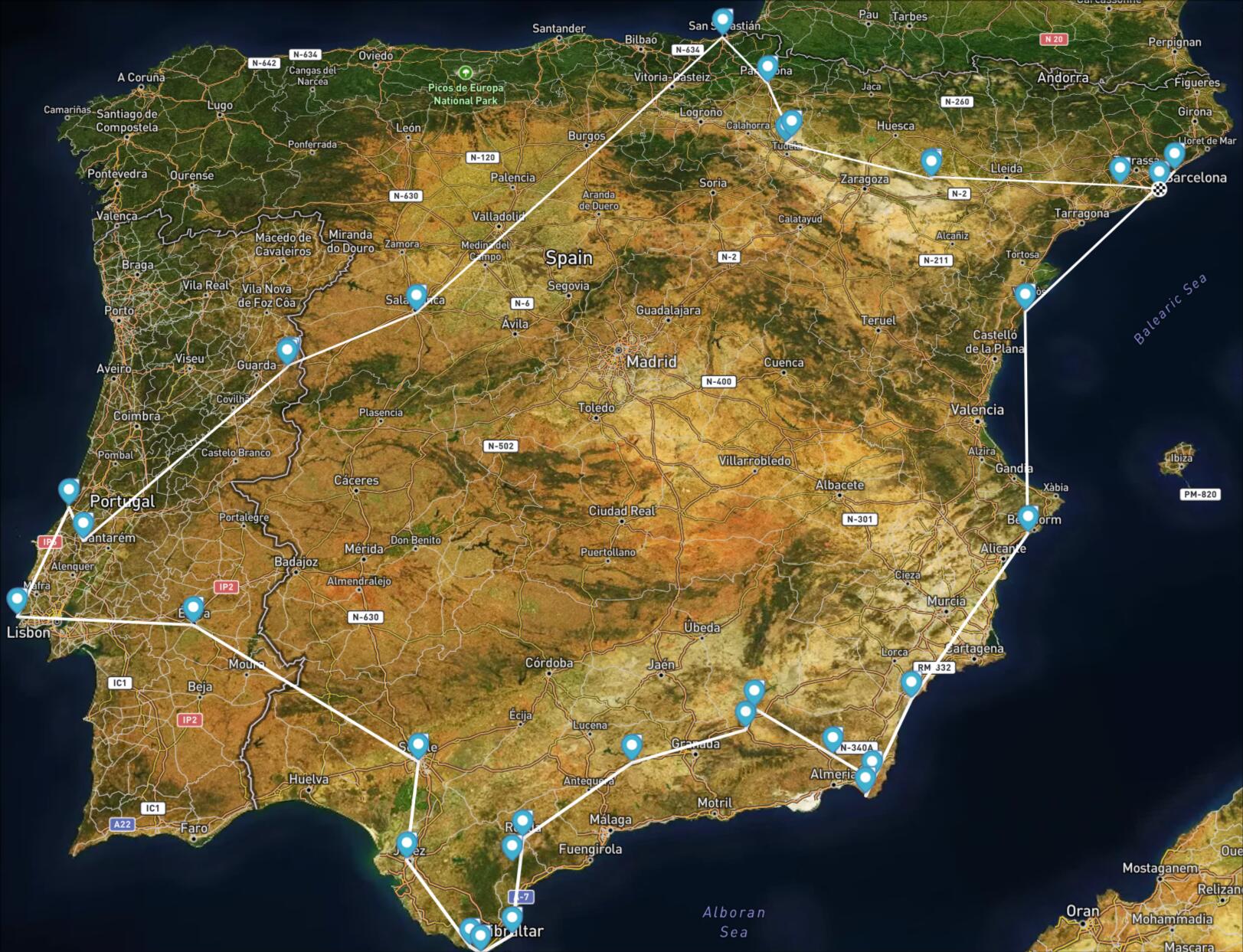
During the journey in the Iberian Peninsula from April to May 2025, Glen had covered a total distance of well over 3,700 km, visiting three countries (Spain, Portugal, and Gibraltar).
On April 23 at 7 AM, the Grimaldi ship departed from Porto Torres with its destination set for Barcelona. The voyage took about 14 hours in total, passing through relatively calm waters between a morning snack and checking out planned maps of the route.
Upon arriving in Barcelona at 9 PM, after initially encountering some distressing traffic congestion typical to Catalonia’s cityscape, the designated first stop was San Sadurni d’Anoia. The free municipal parking area there was occupied, so we opted for an unoccupied nearby abandoned castle (41.434430, 1.782546) for our overnight stay.
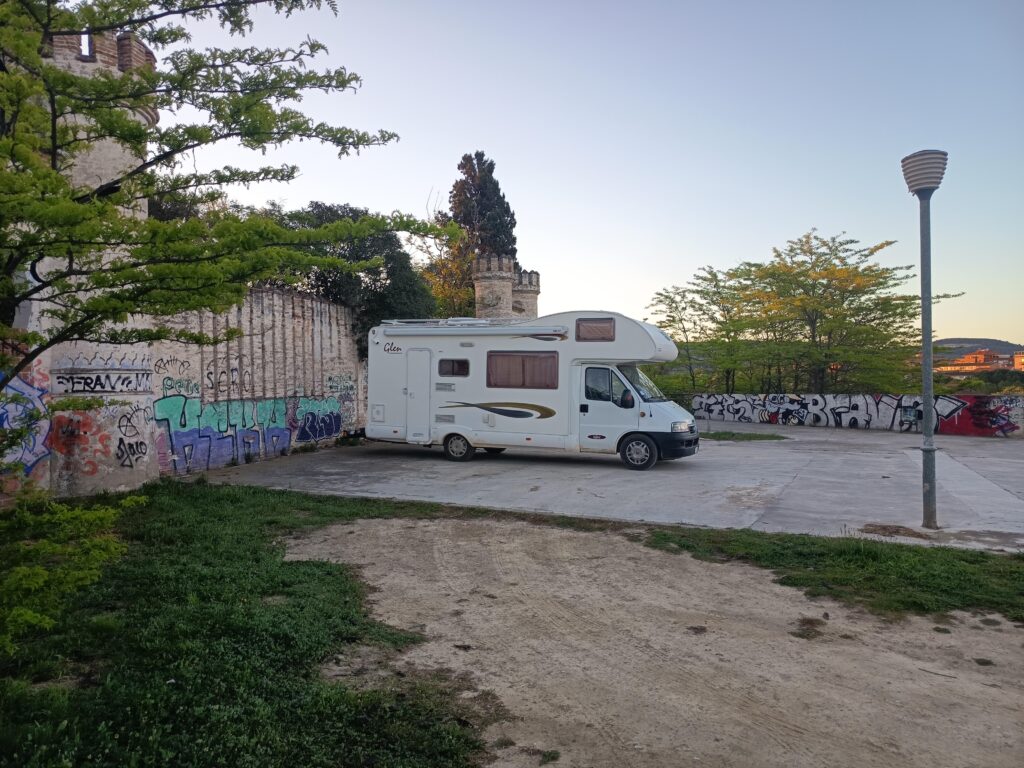
The journey in the Iberian Peninsula: North Spain
In the morning, we head towards our first genuine stop of the Iberian Peninsula journey: the Monegros Desert. The Catalan roads are in excellent condition. The fuel prices are extremely low compared to Italian prices: 1.25€ per liter on average.
After approximately 200 km, entering Aragon, passing through the orchards of Catalonia, we arrived in Sariñena in the province of Huesca. Immediately after, the landscape changed: here was our first desert-like area in Spain.
Driving through the Hermits Saint Miguel, traversing dusty dirt roads, Glen reached the planned stopping point next to the Tozal Colastico (41.679222, -0.155893).

While waiting for our first night in the desert, we enjoyed a fantastic trekking through Tozals, semi-dry stream beds, and amazing landscapes. Despite the heat, Nuri had an incredible time running between the rocky terrain and desert vegetation.

A peaceful night immersed in silence and surrounded by stars, concluded with a fantastic sunrise and an impressive alignment of the moon, Venus, and Saturn.
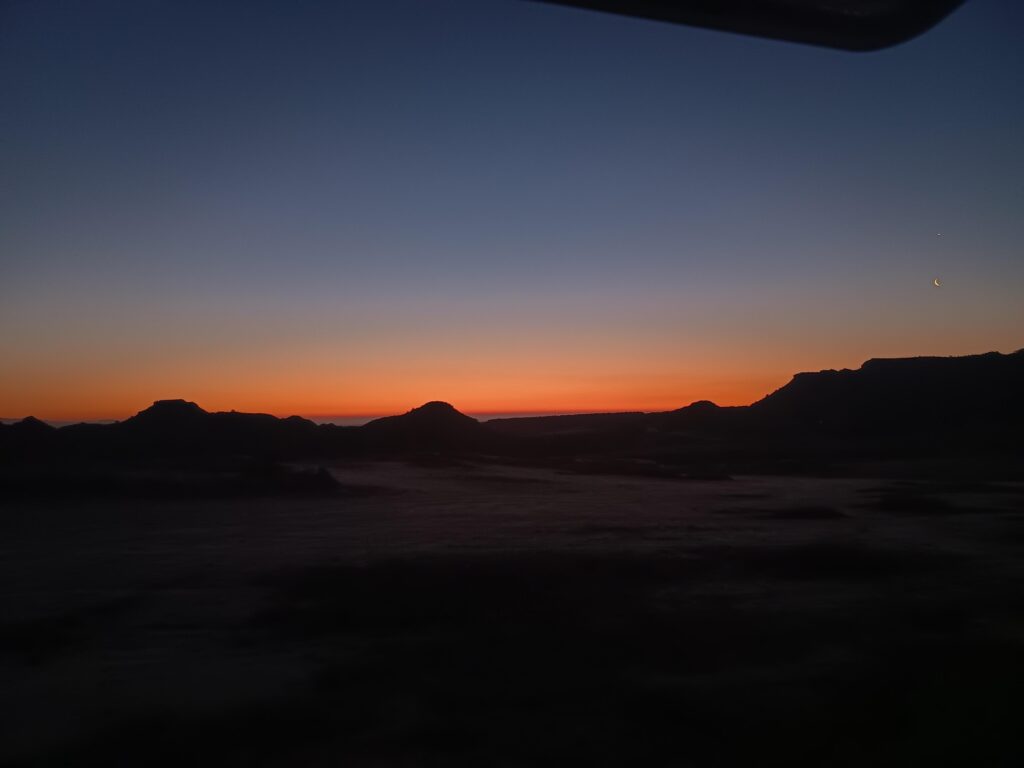
A new day and a new stop on this journey through the Iberian Peninsula: leaving Aragon, we headed towards Arguedas in Navarra, which serves as the gateway to the Las Bardenas Reales Desert.
Here too, the roads are in excellent condition considering that for the entire journey through the Iberian Peninsula. We chose not to use toll highways (which are marked with the prefix AP in Spanish).
Arriving at the free area of stops in Arguedas (42.170433, -1.588891), we were able to enjoy the Las Bardenas Reales Desert by conducting a kind of safari around its perimeter, as it is not possible to stop or overnight within the entire area.

Next to the Arguedas area for stops, it is possible to visit caves used as dwellings.

Despite the heat (around 24°C) late in the evening, it started to rain and for the following day, the weather forecasts were not promising.
We set off towards Donostia/San Sebastian, eager to visit Heuskal Herria, but unfortunately, the rain was falling heavily. We made a brief stop at a commercial center in Iruña/Pamplona and continued our journey towards our destination.
Upon arriving at the area for stops (43.307859, -2.014295), we paid 5€ for the entire day. We managed to have just a quick snack and lunch before being caught off guard by a heavy downpour that prevented us from visiting the city.
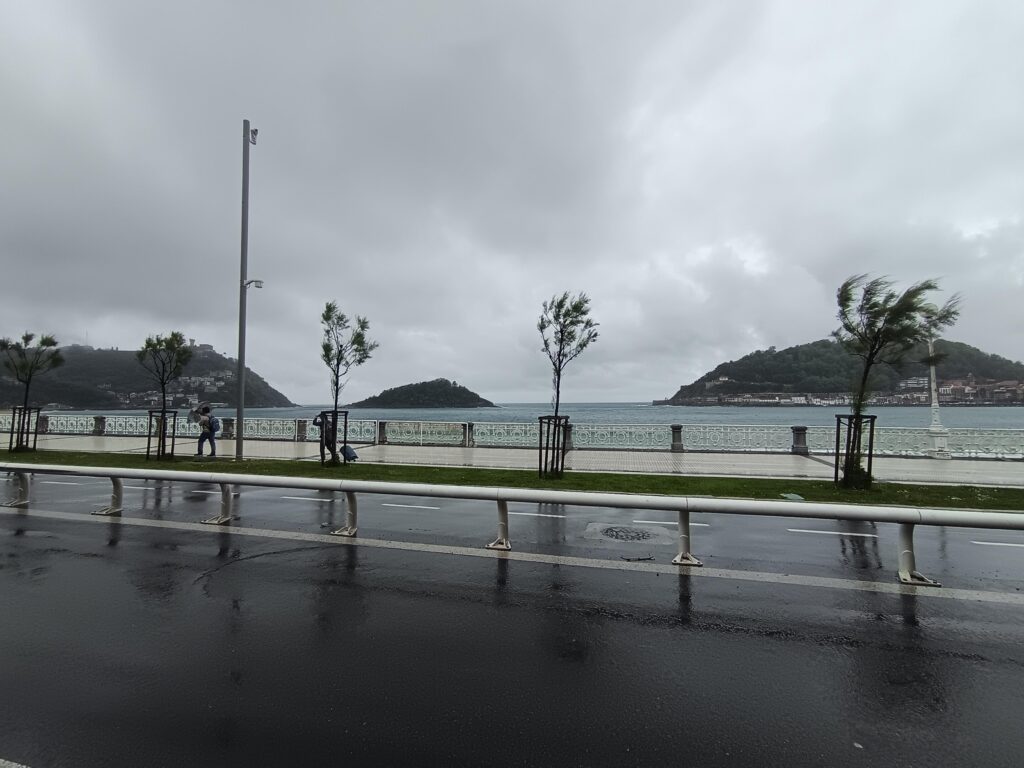
We decided to advance our travel schedule and headed directly towards Salamanca, covering a distance of well over 500 kilometers through Castilla y León. After traversing the forests of Euskadi, we found ourselves on an alpine plateau at 1,000 meters above sea level, flat but somewhat monotonous.
We arrived in the evening to Salamanca, a charming university city south of Valladolid, and settled into free parking area in the industrial zone (40.93914, -5.654798). We need an adapter for our water supply.
In the morning, we visited a still-sleepy downtown area, strolling through the squares and Spanish-style churches.
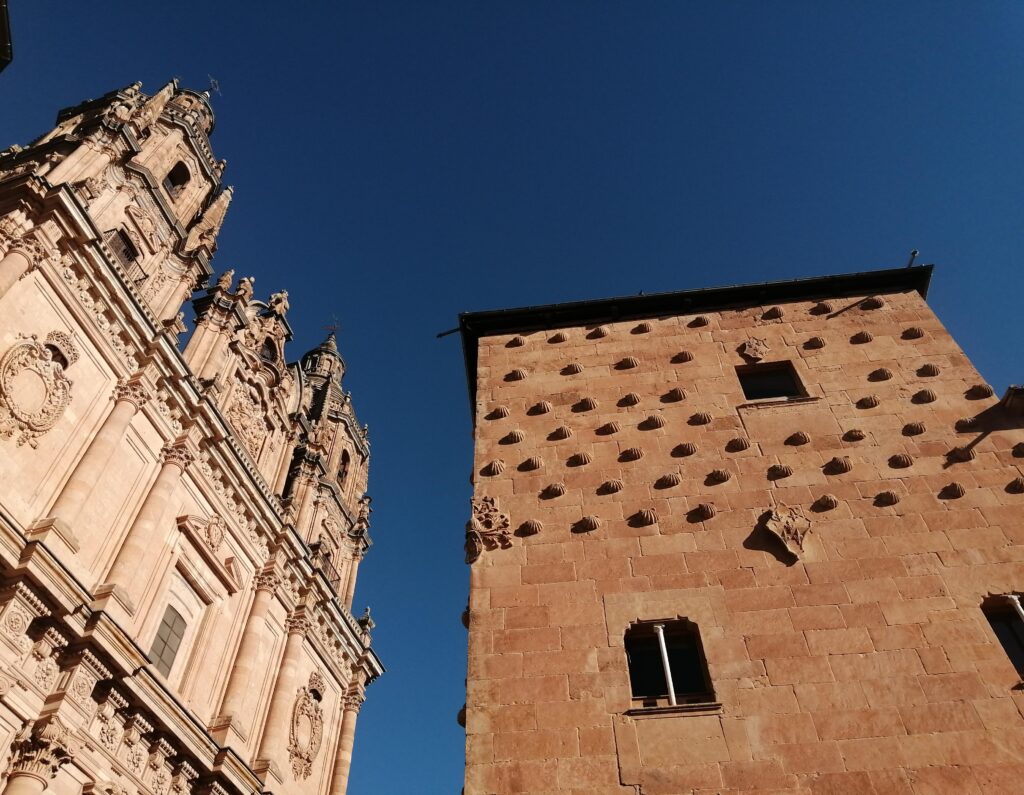
We set off mid-morning towards Portugal: another stretch of 500 kilometers awaits us to reach the Atlantic Ocean.
The journey in the Iberian Peninsula: Portugal
Today is Sunday, April 27th, and the kilometers traveled already total over a thousand. Nuri, after spending a few days without food (fasting), seems to be feeling better, possibly due to water consumed from potholes in the Monegros Desert. Glen handles all the different types of roads without any issues, tackling the steep climbs in Spanish territory with ease. The cruise control helps with navigation and makes long stretches comfortable. We cross Castilla y León from south towards Portugal, followed by a bright sun. The journey through the Iberian Peninsula continues!

We enter Portugal in the afternoon and decide to make a lunch stop in some mountain village for a break from the kilometers separating us from the ocean. The choice falls on Castel Mendo. Unfortunately, this small medieval village was celebrating an unspecified event, making it extremely difficult to stay or even cross for Glen’s seven-meter camper. We then move to a nearby small village (Mesquetela) for our lunch stop.
We continue in the direction of Nazaré but face the first technical issue of the journey. Glen’s position lights, side mirrors, and taillights are not functioning properly. We decide to proceed since we will arrive at Nazaré before sunset with just a few kilometers left. During the journey, we celebrate Glen having covered 100,000 kilometers!

We finally arrive in Nazaré, a coastal town famous for its giant waves that can reach up to 30 meters high. This time we stay at Obitur Valado campsite (39.598108, -9.05621). Again, we need an adapter for our water supply here as well.
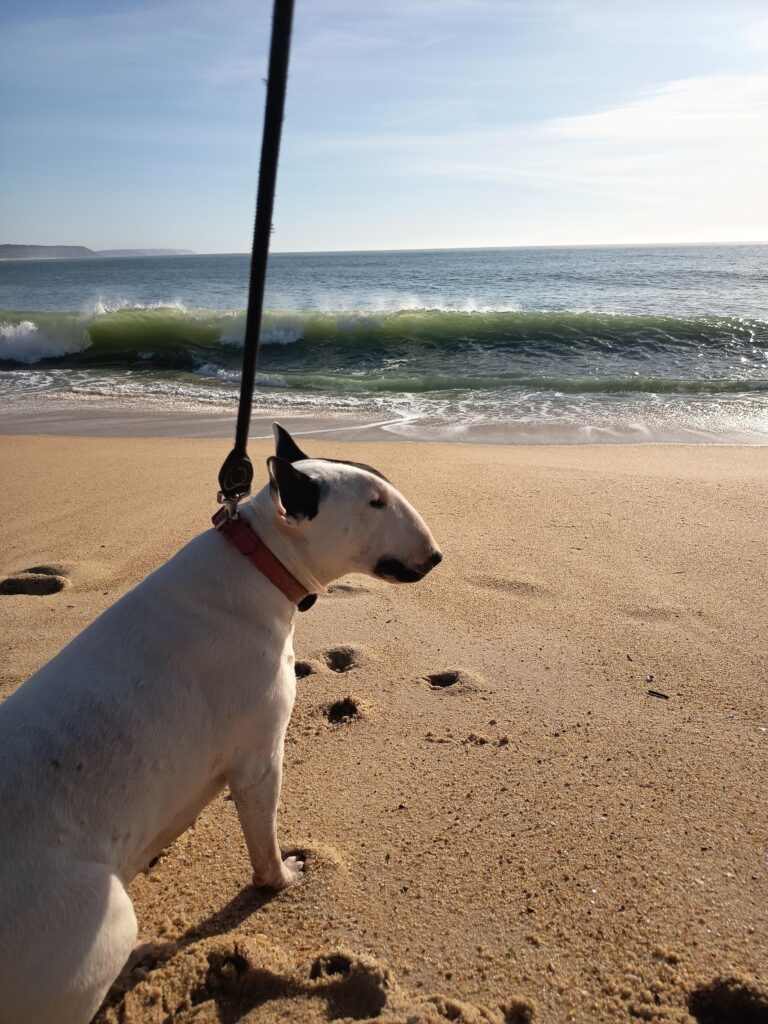
The sun seems to never set, and we celebrate the day with an excellent apéritif on the long beach and a delicious seafood dinner, ending with a superb glass of Port wine.
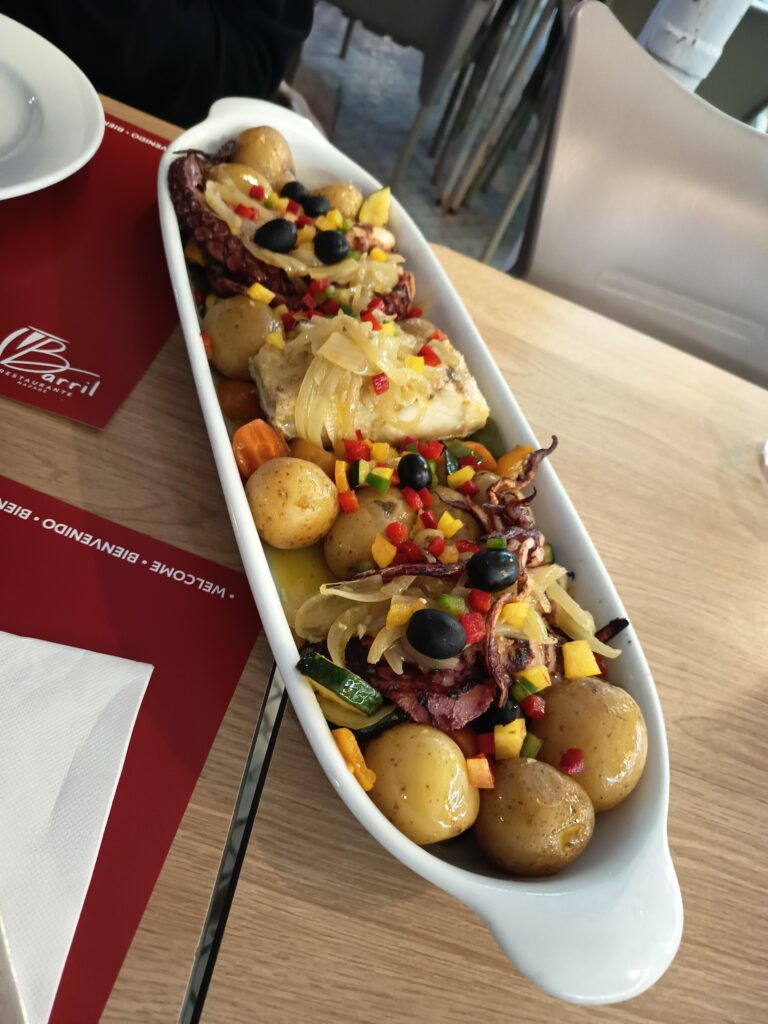
The next day, we decide to resolve the problem with Glen’s lights and head out to find a mechanic. Despite language barriers, we locate a garage in Rio Mayor that generously gets started on fixing the issue. It appears that the reversing lights are functioning properly, and after about an hour of work, the mechanic successfully connects them to an additional switch. Glen is now ready to continue his journey through the Iberian Peninsula!
The next stop will be Cabo da Roca, which is the westernmost point of all European mainland: an inevitable must for any good geography nerd!
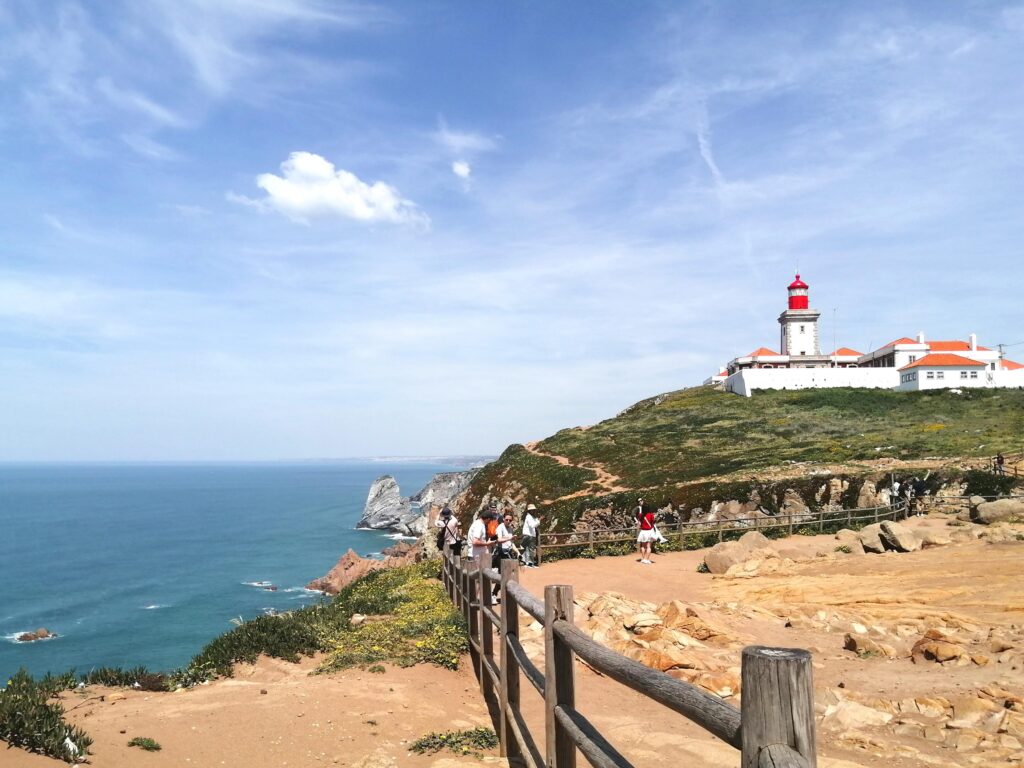
After lunch, we set off towards Lisbon, but there’s an air of unease in the atmosphere. I receive a message from an unknown Italian number: it mentions a power outage. At first, I thought it was just another invasive ad, but April 28, 2025 is already quite unusual—entirely of Portugal and Spain go dark! We are in the midst of a historic power outage!
The highway that crosses Lisbon is constricted by vehicles, traffic, and confusion. Thinking about entering the heart of Portugal seems like a risk. So we decide to continue our journey and head towards Évora, a small medieval city. We still have no real understanding of the situation with the blackout.
Meanwhile, our phones stop receiving signals.

The road towards Évora is calm and pleasant, especially after the chaos in Lisbon. We pass through small villages where we notice that the traffic lights and signs for gas stations are all out. This begins to make sense: we are in the middle of the power outage!
We arrive in Évora in a surreal atmosphere. The city is dark. We stay near the free area near the downtown (38.563438, -7.916308) and visit the charming medieval historical center.
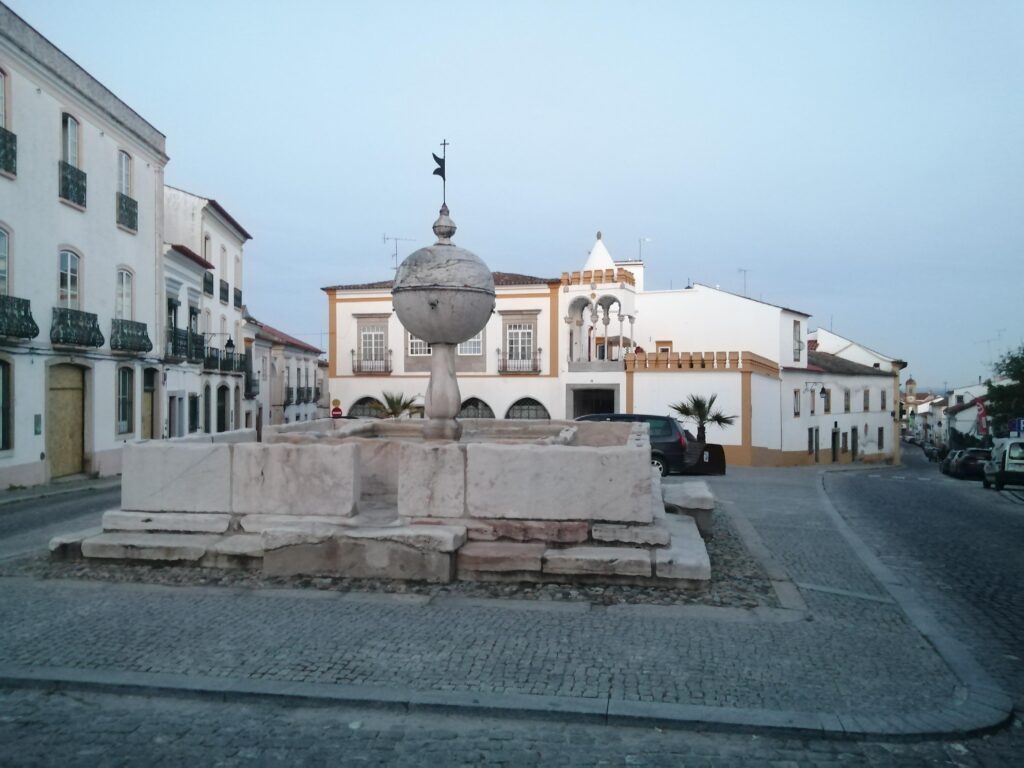
We enjoy an apéritif under the unreal stars since we are in the city center. A small local within the city walls has set up with some luck lights. There is a lot of silence. Nuri is the only one who has a light!

As we prepare to head back to Glen, the city suddenly illuminates once again and erupts in a loud burst of joy. The power outage is over!
The next day, we visit the Capela dos Ossos (Cave of Bones) and the nearby museum complex before heading towards Seville. We are returning to Spain!

The journey in the Iberian Peninsula: South Spain
Tuesday, April 29, we have been on the road for a week and are now just over 2000 kilometers traveled. Despite resolving the issue with Glen’s lights temporarily, nothing seems to be able to stop us now.
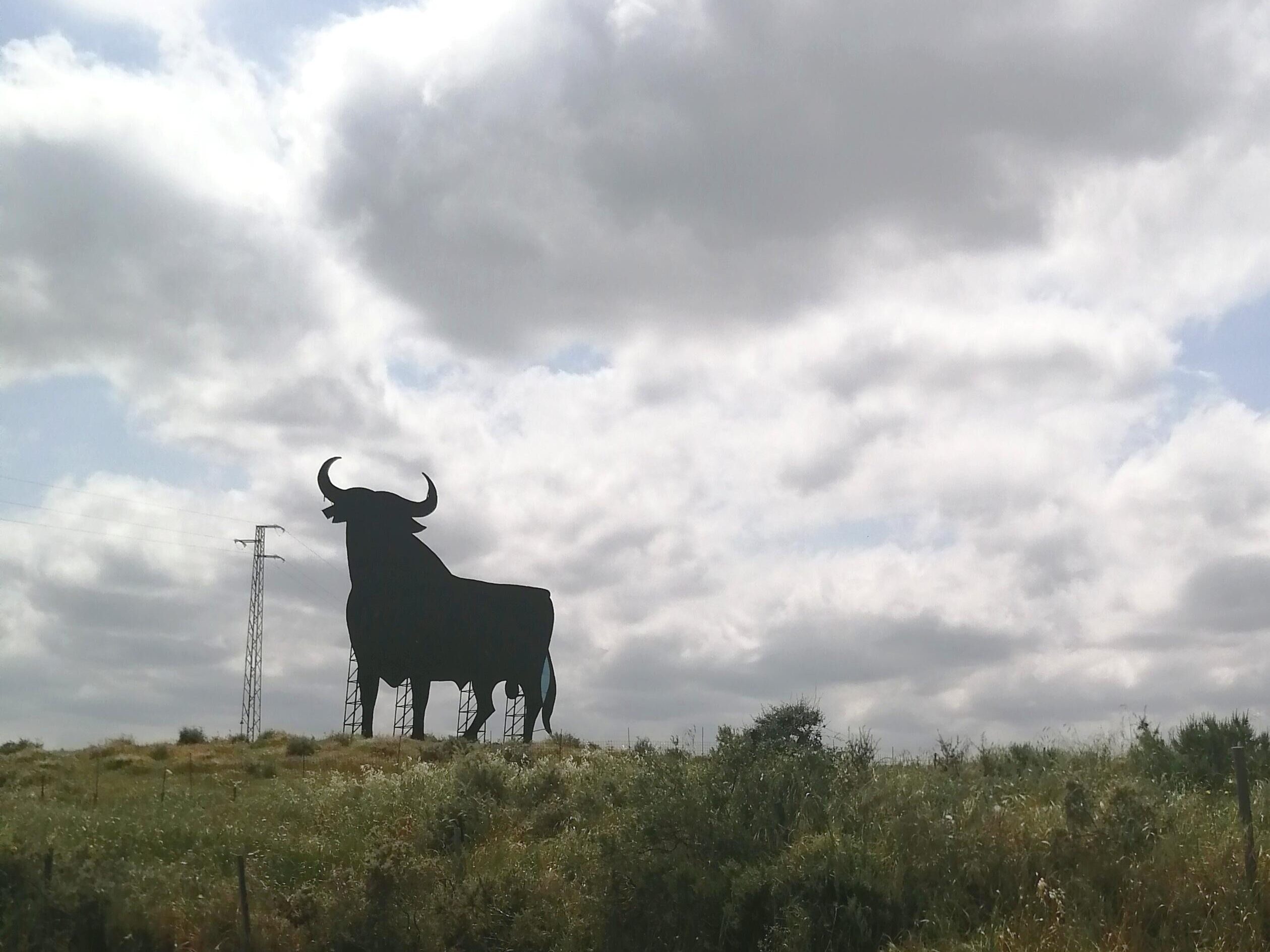
We enter Extremadura, where the landscape is mountainous and practically uninhabited. The road isn’t the best, but we continue towards Seville in Andalusia. This will be our first major city to visit.
Upon arriving in Seville, we stay at a large payment campsite adjacent to the port (37.361273, -5.994809), which is about thirty minutes’ walk from the center of the city.
When entering the city, we are greeted by the majestic Portal de Triana and the Casetas, which have been prepared for the upcoming Feria de Abril.
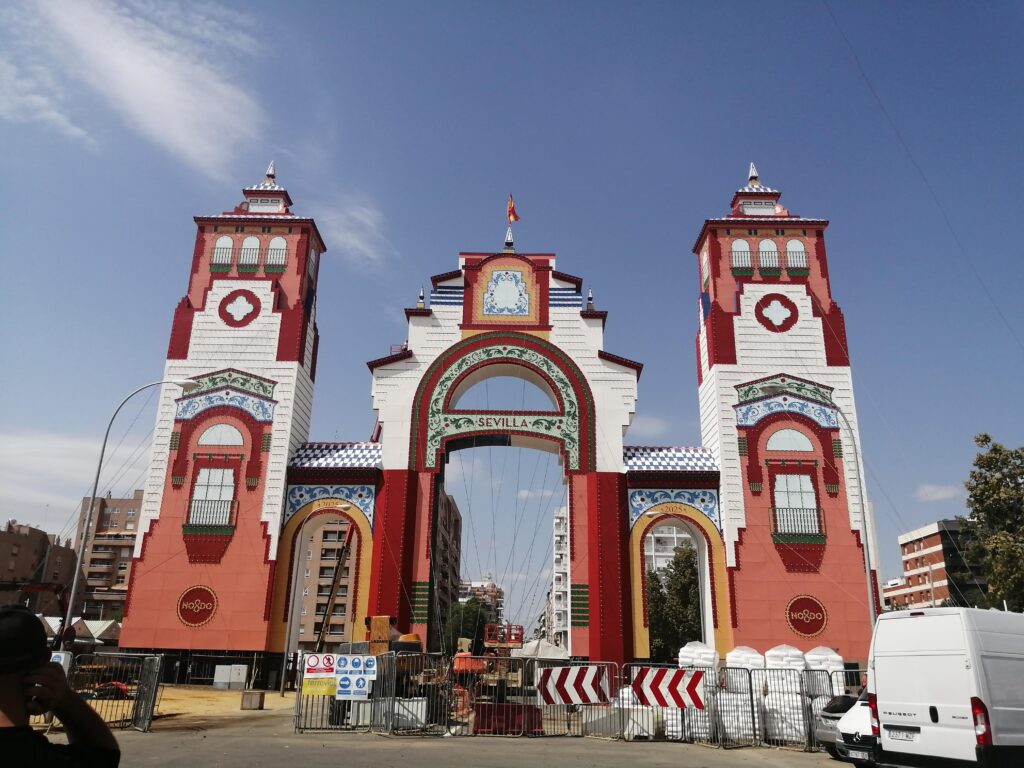
We wander through a beautiful historic center full of people. It’s quite strange, as most of the rest of Spain was practically uninhabited. We enjoy various types of tapas while prolonging our apéritifs and strolling through the streets of Seville.
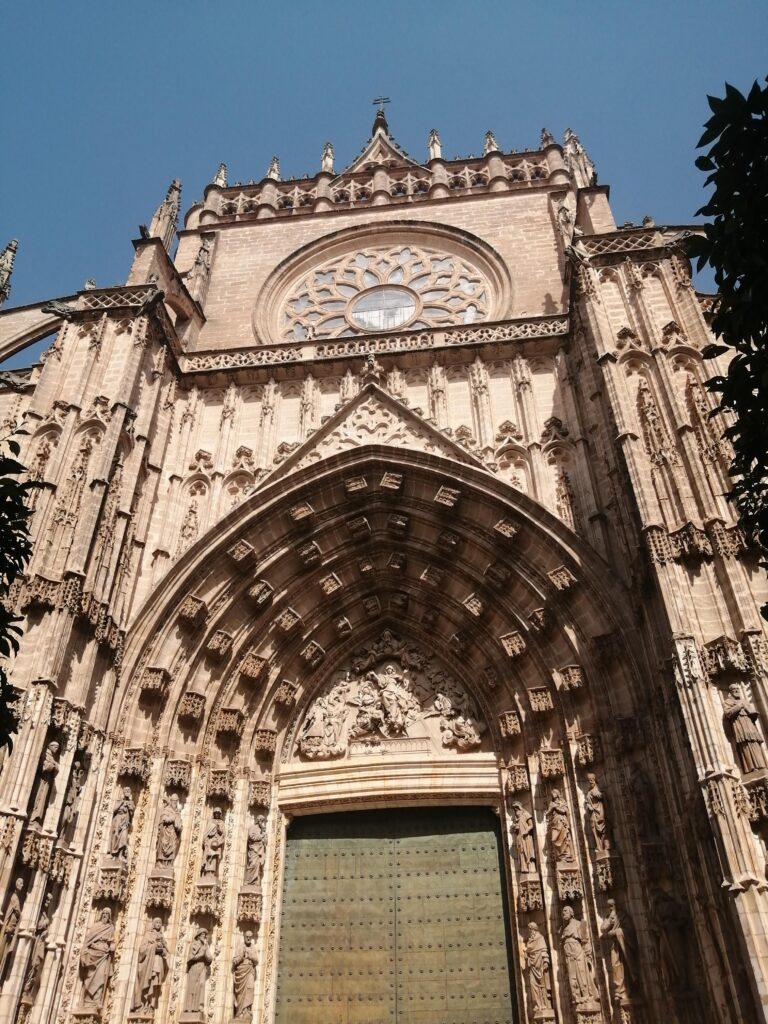
Upon returning to the camper, something goes wrong. Nuri is unable to walk due to pain in her front limbs. It seems as if she has injured her paws, possibly from coming into contact with surfaces that were too hot in the city. Despite the challenging journey back to the campsite, we decide to bring Nuri back on my arms.
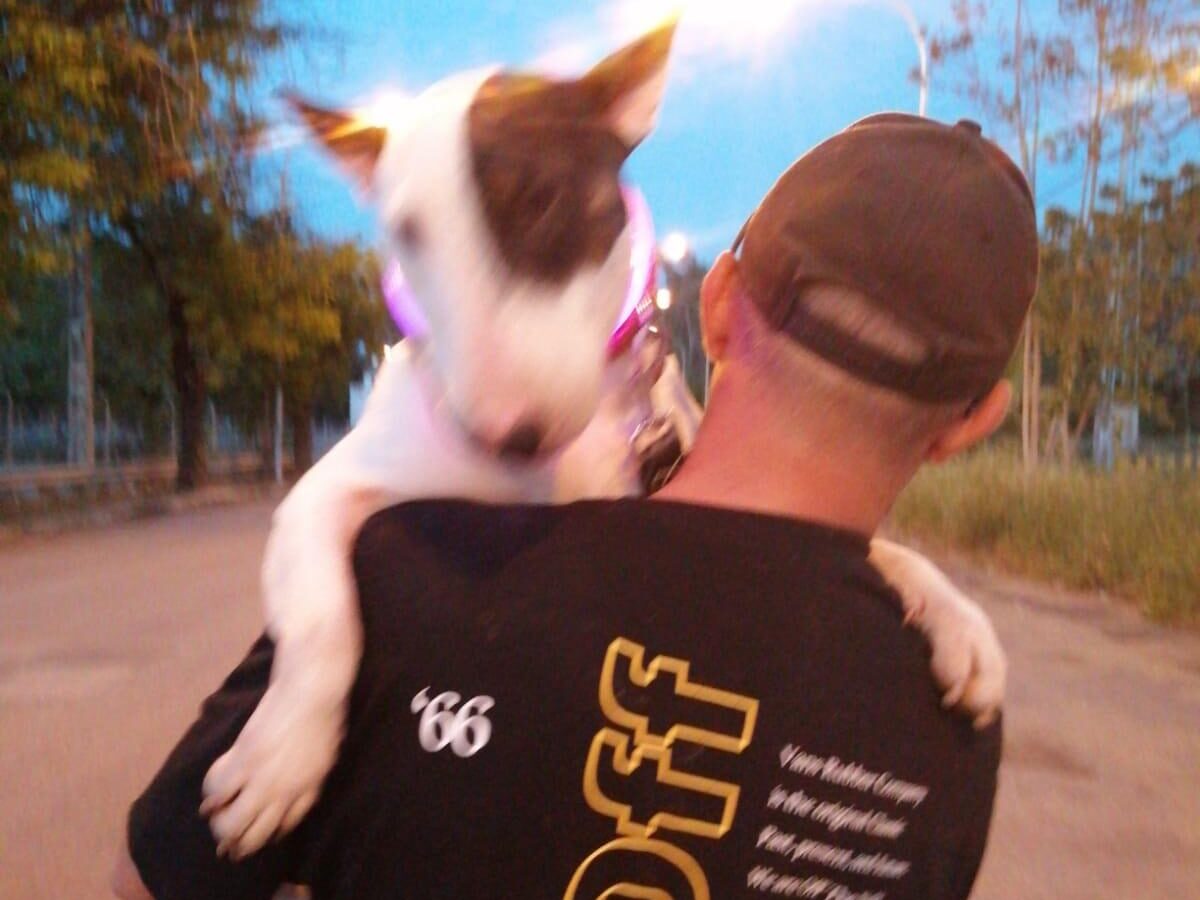
We set off early this morning towards the southern tip of the European continent: Tarifa. During our journey, we stop to do some shopping in a huge commercial center in Jerez de la Frontera. Inside the center, we search for a pharmacy to try and purchase some medication for Nuri’s limbs. The pharmacist informs us that there is a veterinary clinic called “Canitas” within the center.
Despite the difficulties (as it seems that very few people speak English in Spain), we manage to explain to the doctor about Nuri’s condition. Doctor provides her with a specially formulated protective medicine for shock absorbers and advises us to buy Aloe Vera. We continue our journey under the rain, hoping that Nuri can get better as soon as possible.
Before arriving at Tarifa, we stop at the dunes of Valdevaqueros. Fortunately, the day was not very good, and the sea could only be admired from afar.
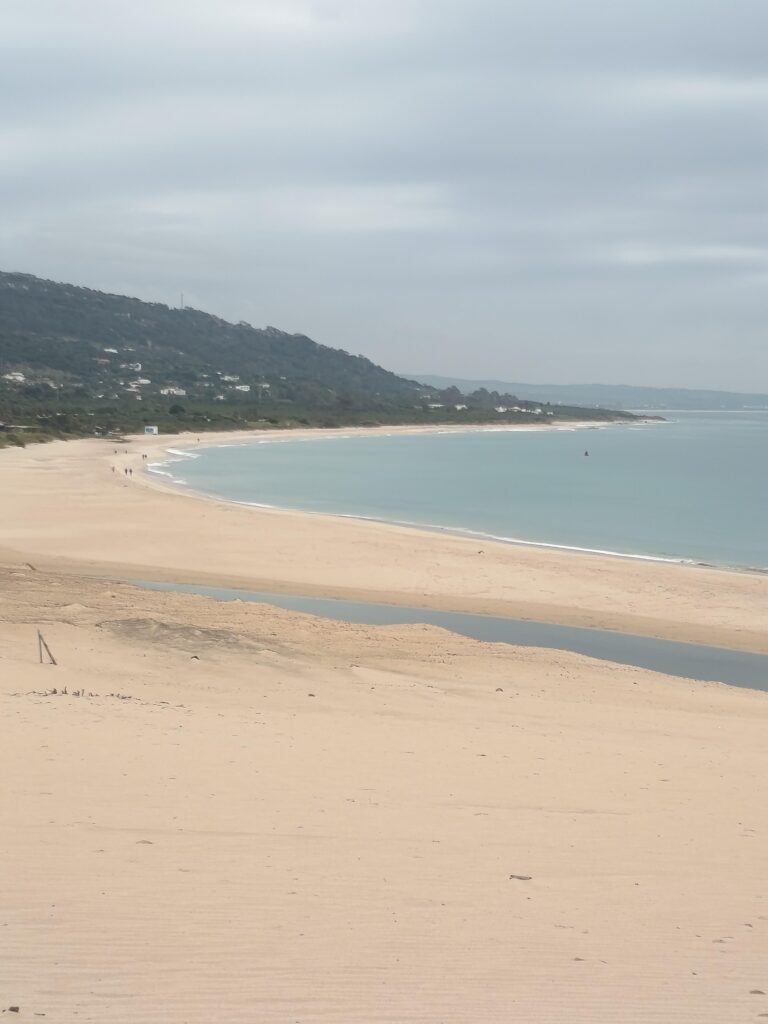
Nuri continues to suffer, and it’s not possible for her to step down from the camper. At least she is still eating. I continue applying the prescribed medications while trying to stay close to her.
We arrive in Tarifa, where we park in a parking lot just outside the city center (36.018297, -5.611224). Tarifa is charming but seems very abandoned. We almost reach the southern tip of Europe. Africa is right in front of us. The only thing standing between us and our goal is a gate that blocks the road to the Island of Palomas. It feels like we’ve completed this geographer’s mission!

Nuri is finally able to step down from the camper, though she is still struggling. The medications are starting to show their effects!
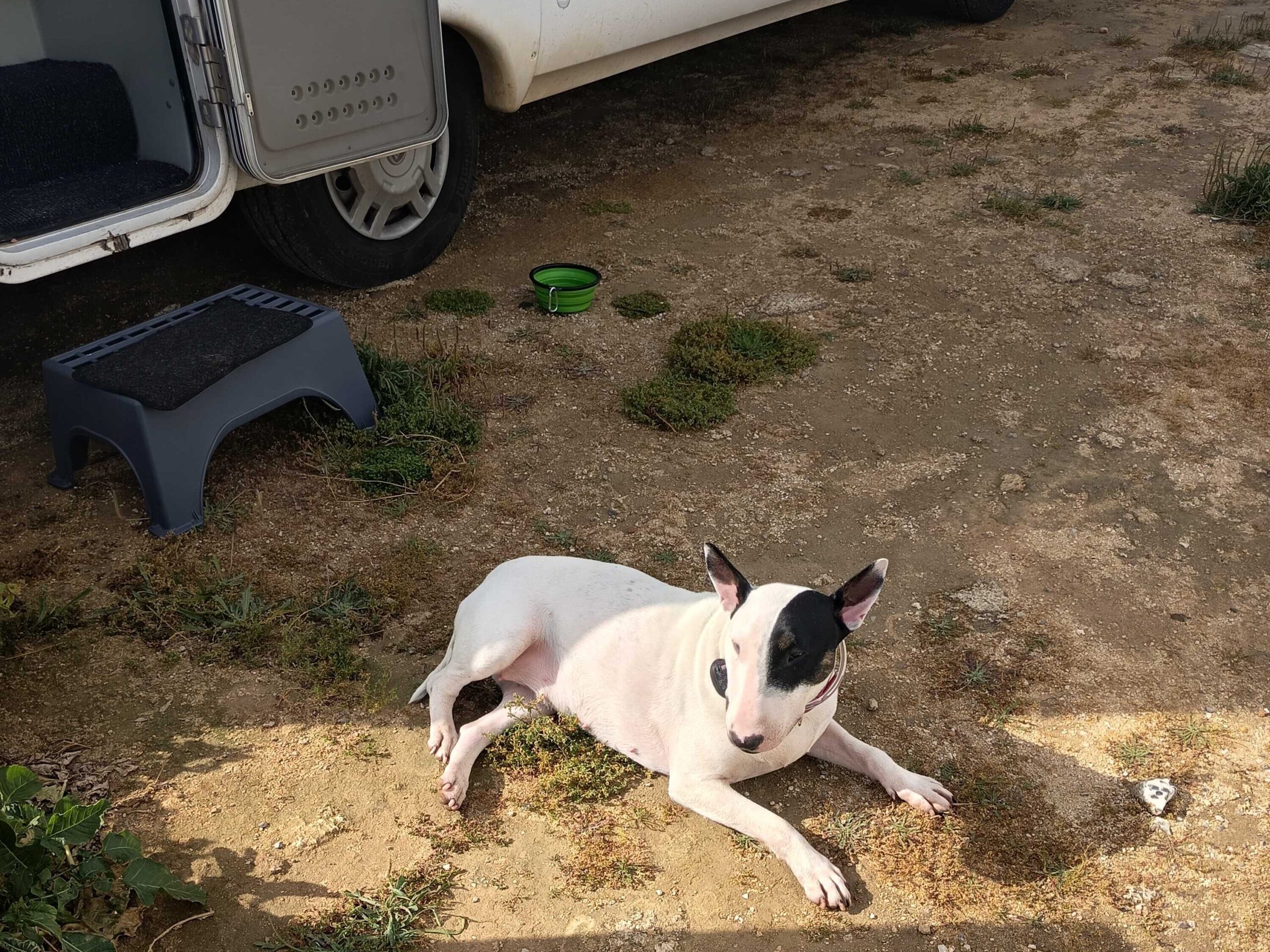
The next day, we set out towards Gibraltar. Unfortunately, the day is not very promising; the gray clouds seem to be following us.
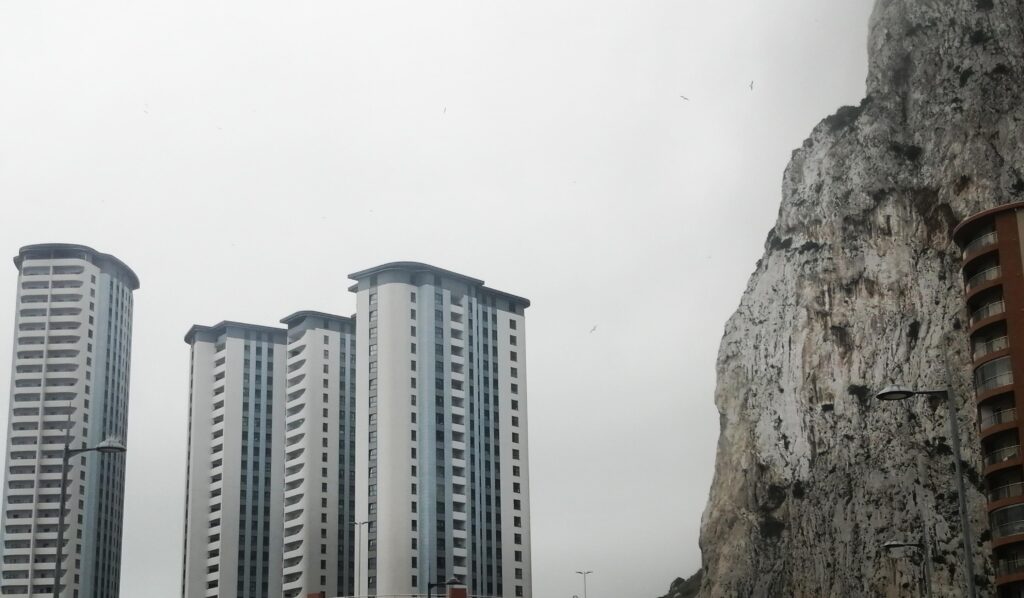
We continue our journey in the Iberian Peninsula after being blocked for two hours inside a tunnel at Gibraltar due to an incident. The sky is gray, and Gibraltar feels like an alien city here in southern Spain. We see tall buildings, British flags, and pay in pounds.
As we traverse the mountains with roads reaching up to 1100 meters in altitude, we push forward through Ronda, but we are unable to stop due to a large crowd of people along the road.
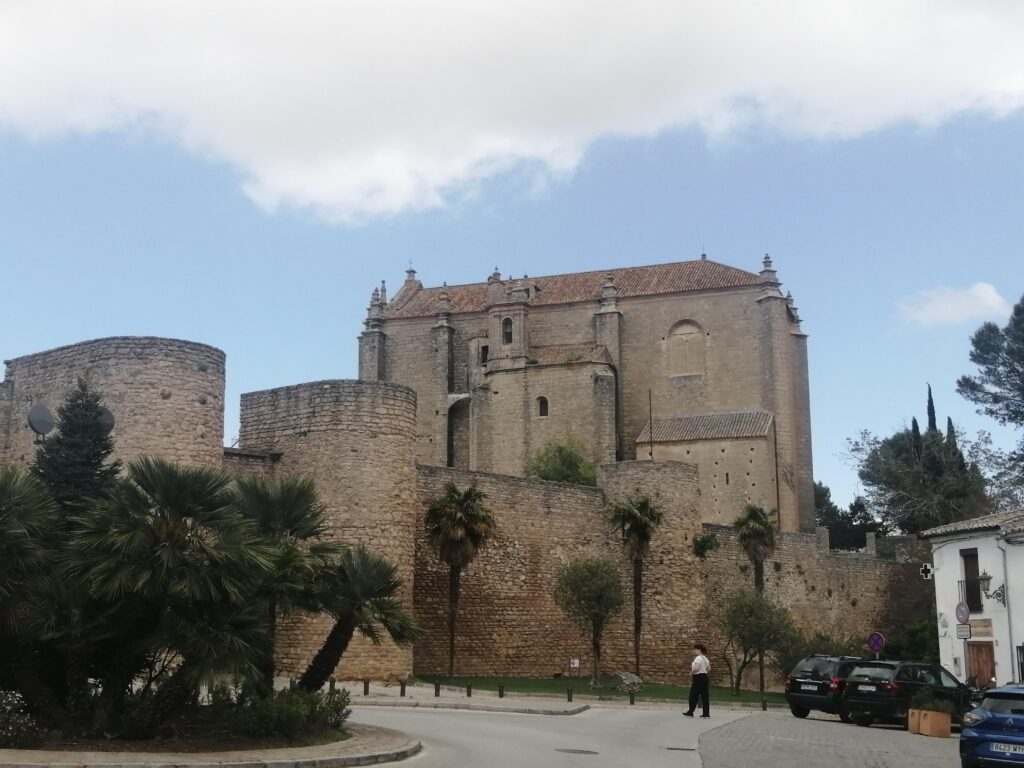
We finally arrive at Loja, an ancient typical Andalusian city nestled in the valley of the Genil River, overlooking the remains of the Alcazaba (a Moorish fortress). The town is relatively close to Granada where we plan to visit the Alhambra.
We park in the free municipal area parking lot (37.171527, -4.156392).
Nuri seems to be improving slightly, but as always, it starts raining heavily at night.
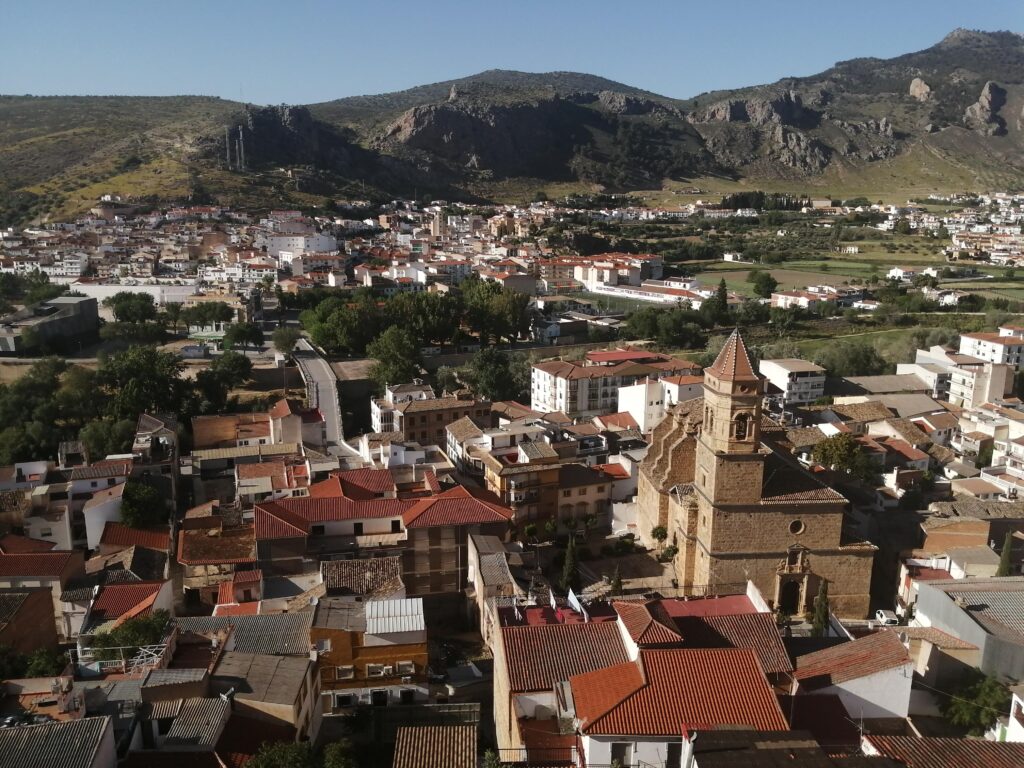
After discovering that visiting the Alhambra in Granada was impossible due to needing to make advanced reservations, we set off towards Guadix where our journey’s main thread will continue: exploring the deserts.
Guadix is a charming town nestled at the foot of the northern slopes of the Sierra Nevada at an altitude of 915 meters. We park in the spacious free parking area at the entrance to the city (37.304004, -3.132311).
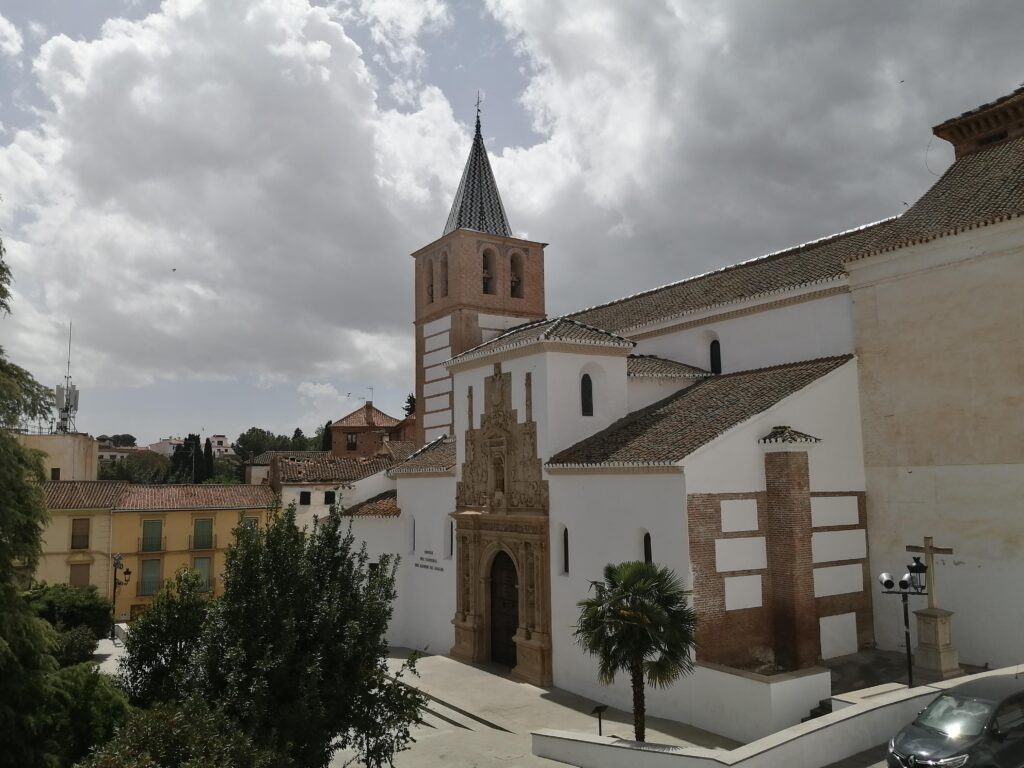
Nuri finally begins to walk again. She enjoys a delightful appetizer at a local restaurant in the town center.
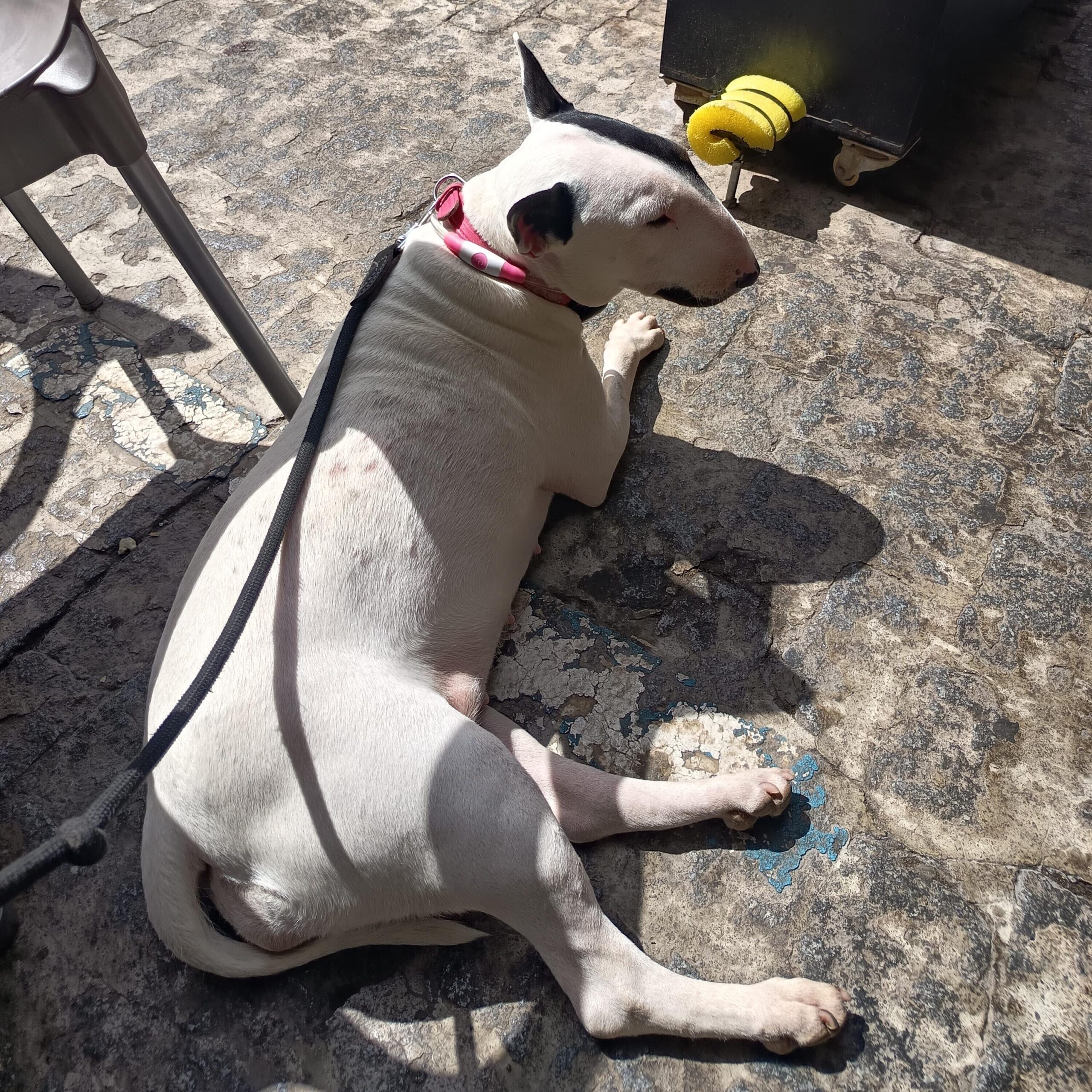
From Guadix, we visit the Gorafe Megalithic Park with its dolmens and stunning canyons.

We head towards Tabernas and its desert, following winding roads that climb up to an altitude of 1400 meters. Nuri stays with us every step of the way. The Sierra Nevada is right next to us.

At Tabernas, we head to Fort Bravo, one of the three filming locations used for Western films. Sergio Leone’s classic “The Good, the Bad and the Ugly” were shot here.
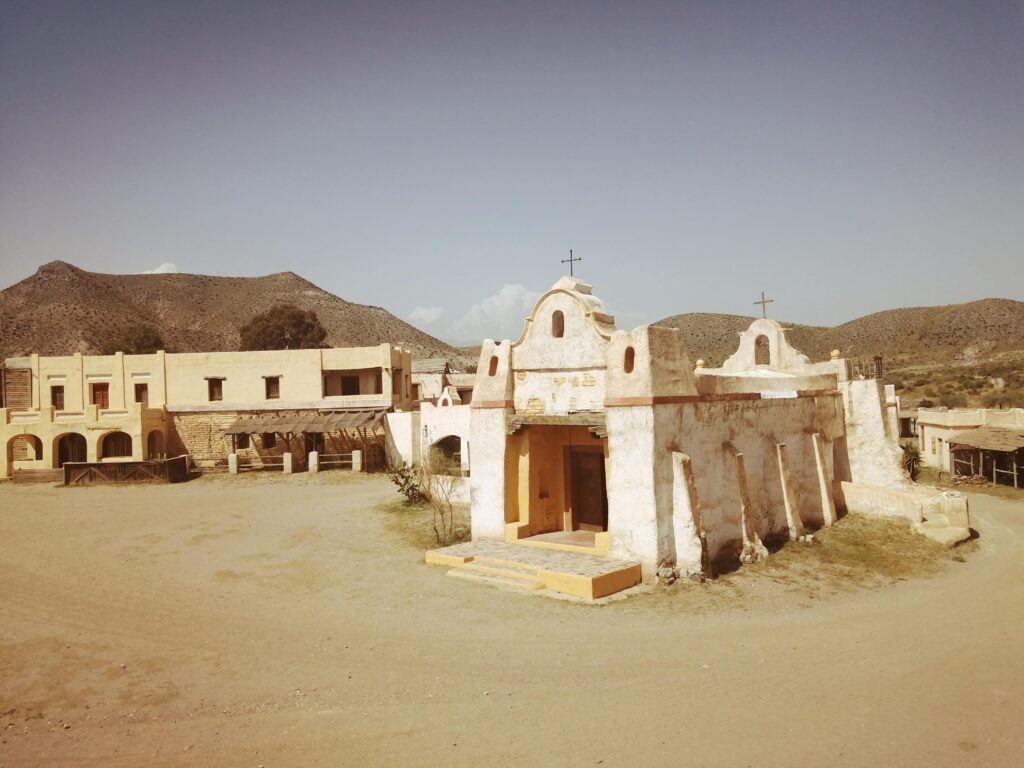
We are acutely aware that Fort Bravo is a sort of tourist trap, but we make the most of our time there, enjoying it with a cold beer at the preserved film sets. The theater performance inside the saloon adds to the spectacle.
Nuri remains in her camper for now, but with the air conditioning turned on, she’s comfortable despite the heat outside. We are grateful for the Edecoa 1500w inverter, which allows us to activate the Dometic air conditioner without any issues.
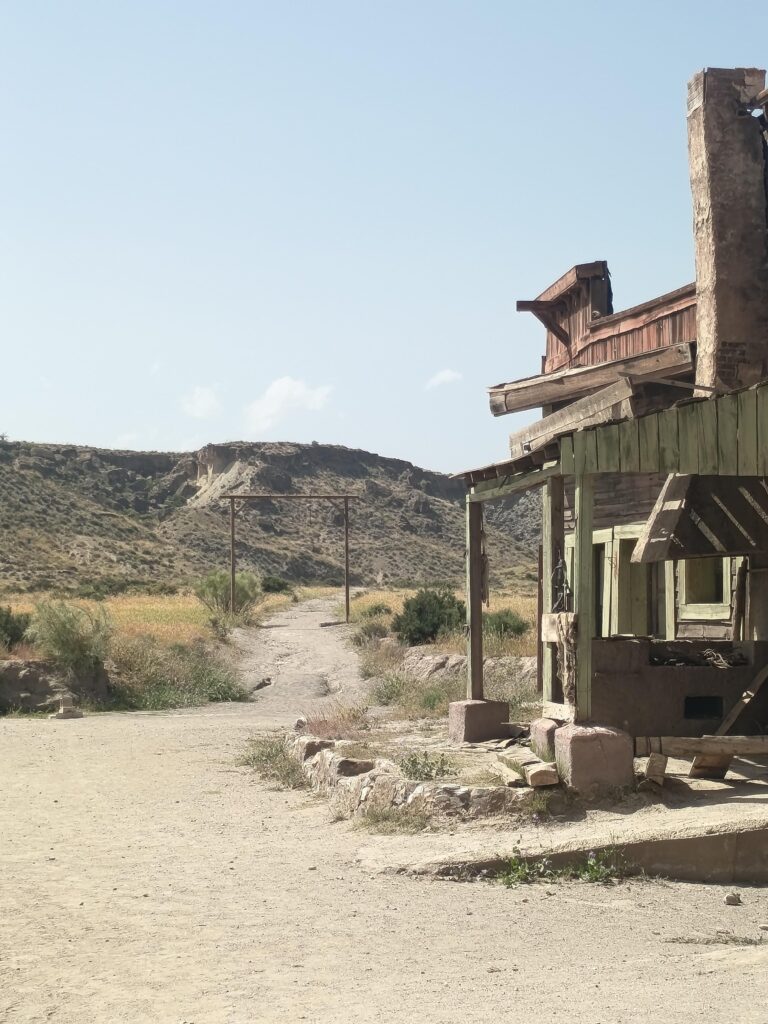
From Fort Bravo, we continue our journey to Los Albaricoques, another must-stop for lovers of spaghetti western films—even though the filming location has been mostly abandoned. Here the final “triello” scene was filmed.
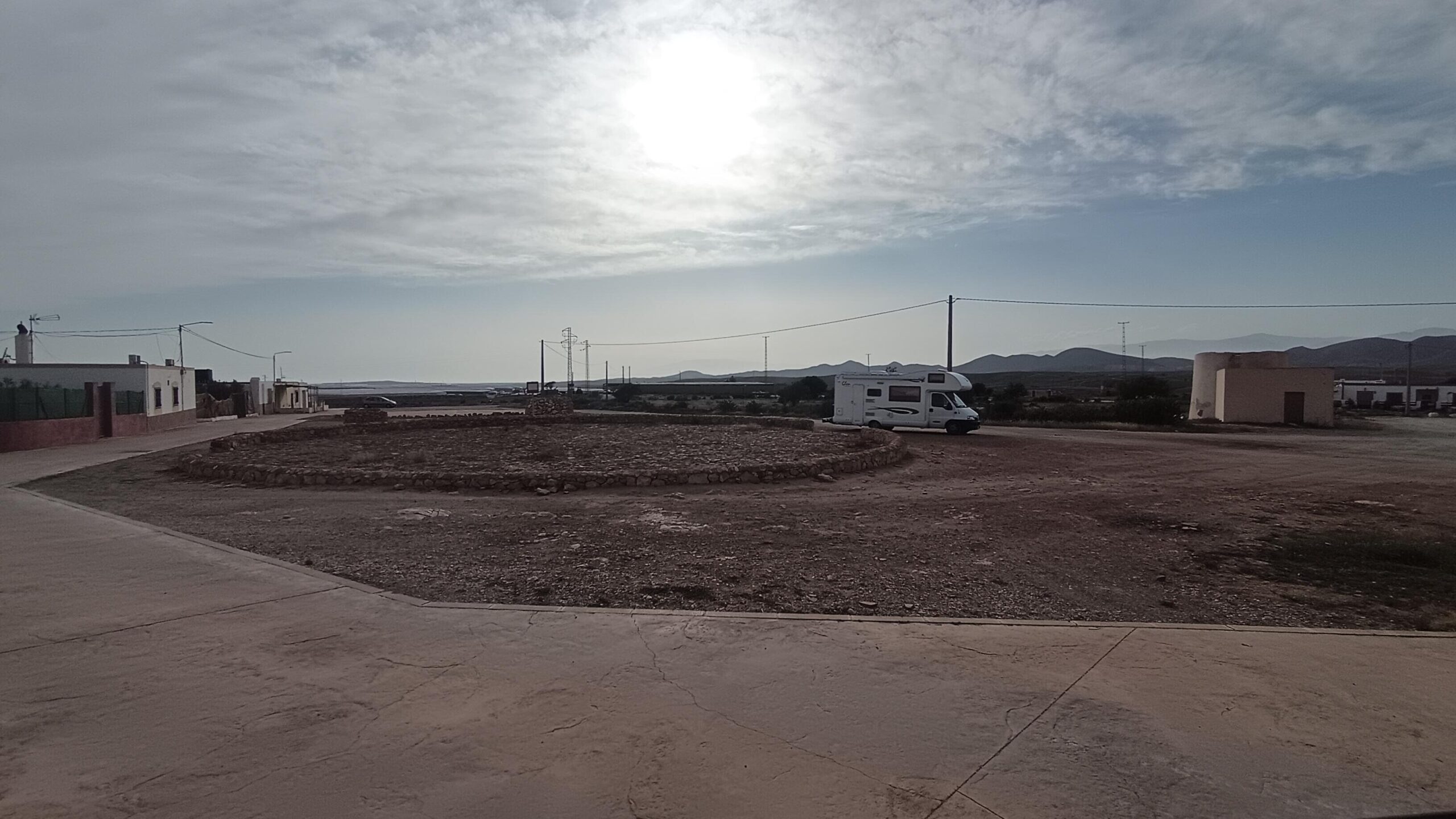
We continue our journey on the 2nd of May heading towards Cape Gaeta, traversing numerous vineyards and orchards for agricultural purposes.
We stop at the free parking lot in La Fabriquilla (36.738954, 2.207752), right by the sea.
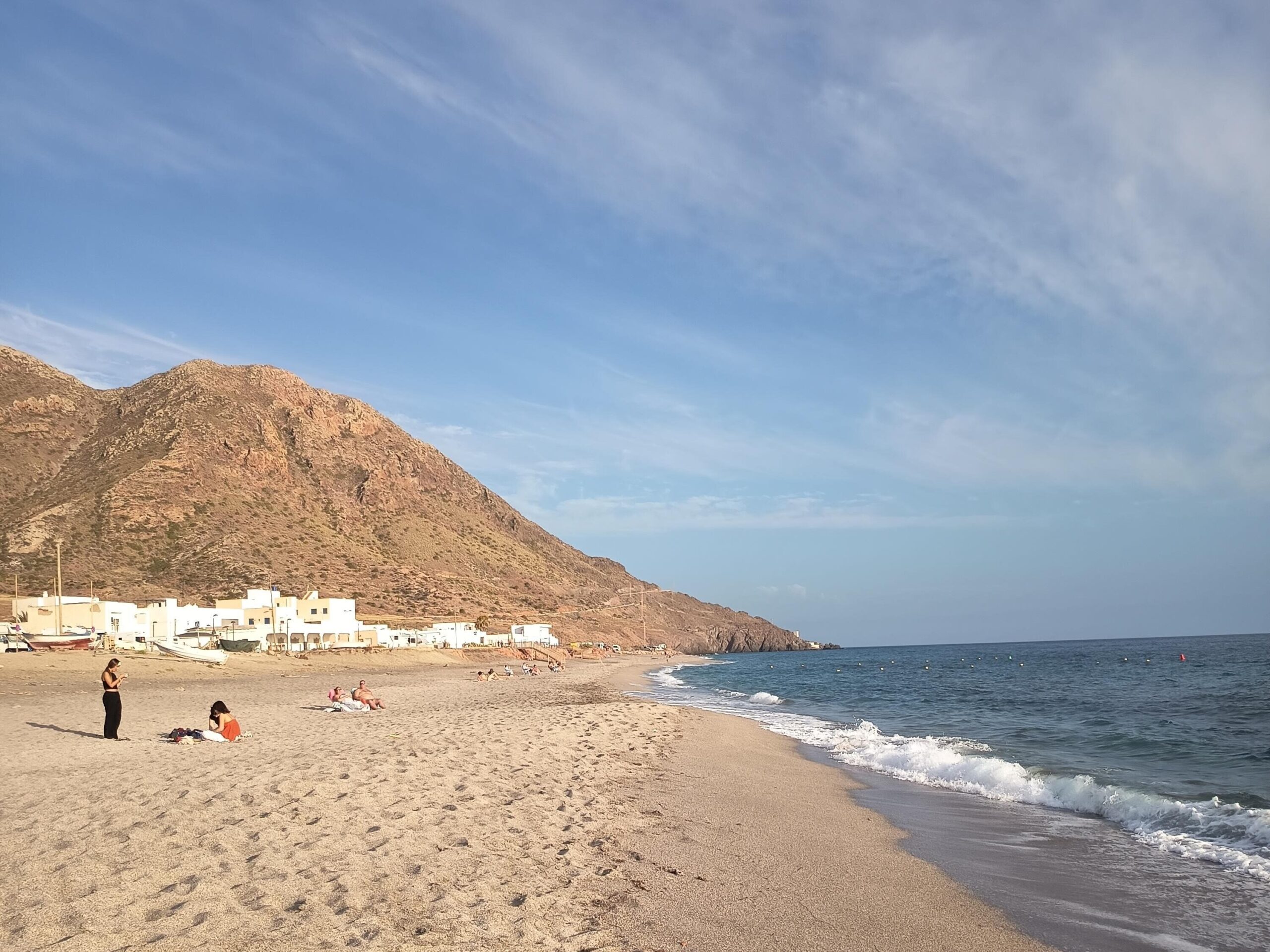
It’s wonderful news that Nuri is finally able to play on the beach! It seems her pain from her leg injuries has become more of a distant memory.
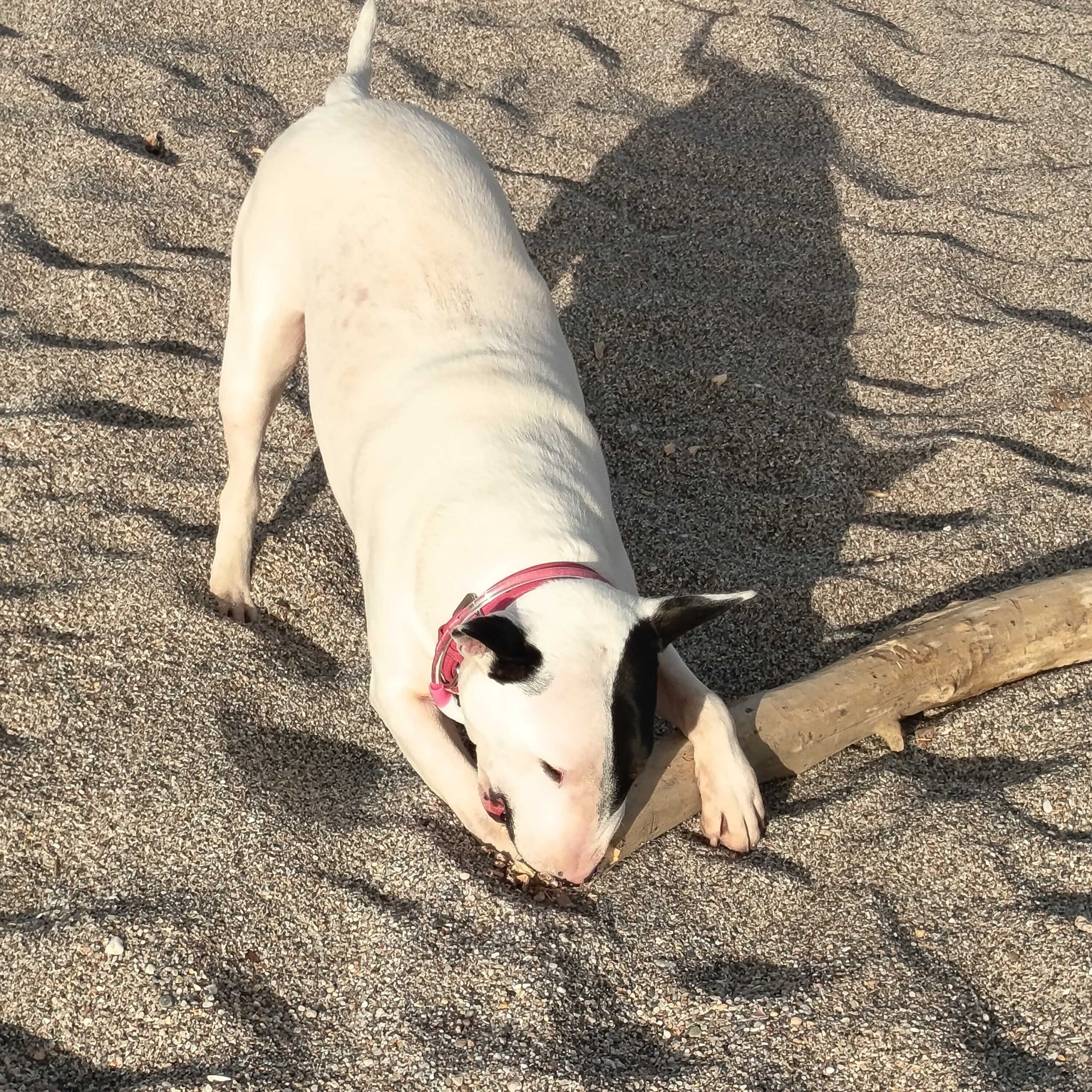
The journey in the Iberian Peninsula: Spain East coast
Saturday, May 3rd, we’ve already covered over 3,000 kilometers, and time seems to be improving for Nuri. She is getting better quickly.
We have three days ahead in the coastal region of Spain where the sea will greet us at every turn.
Heading towards the Murcia region, specifically at the border with Andalusia, to visit Playa de Los Cocedores. We park freely in the spacious area near the beach’s entrance (37.375873, -1.629708).
The beach isn’t in its best condition: it seems quite dirty, but we still give ourselves a refreshing swim: the first of the season!
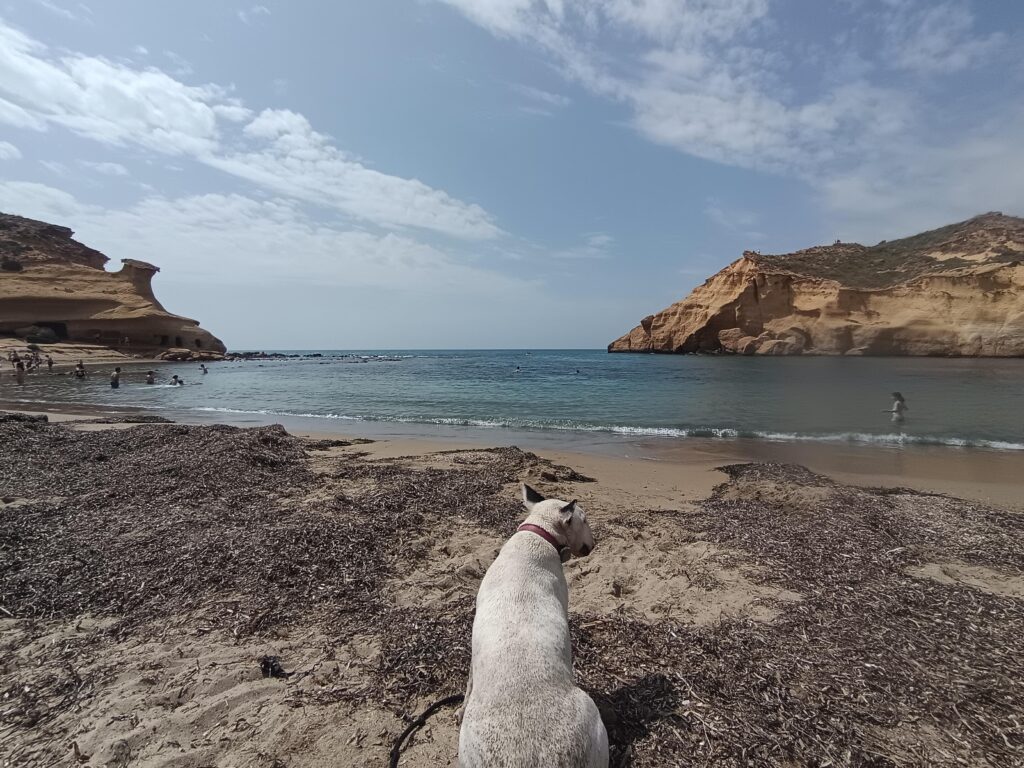
Unfortunately, we had an argument with some locals who were contesting our use of the beach for Nuri to swim. At the entrance of the beach, there were signs that prohibited bathing dogs. The locals only targeted Nuri while ignoring other Spanish dogs present on the beach.
To avoid any further disputes after a few swims, Nuri decided to take a nap in her camper. Upon returning to the beach, we noticed that the same locals who had criticized Nuri’s healthy swims (particularly due to her foot conditions) ignored all the beach rules, including not consuming food or leaving litter behind.
We didn’t back down and concluded the day with an aperitif at a beautiful but unfortunately very dirty and abandoned beach.
The following day, we headed for the camping site El Torres in Villajoyosa (38.51658, -0.200248).
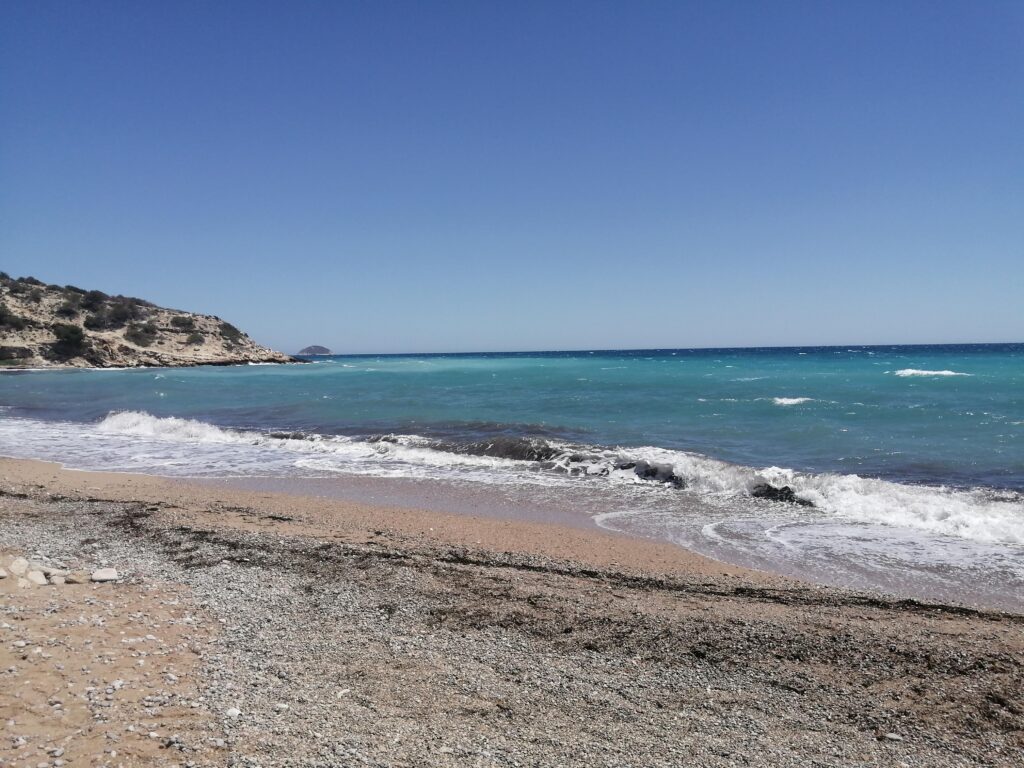
Here, the sea is beautiful but there’s no beach. We find ourselves in a very touristy area where hotels and structures have taken precedence. However, the camping site is welcoming and clean.
For dinner, we enjoy a nice meal of paella.

We’ll depart the following morning towards the Valencian Community, specifically towards Peñíscola, a small coastal city located north of Valencia. We will park in the pay parking area near the city center (40.366542, 0.396655).
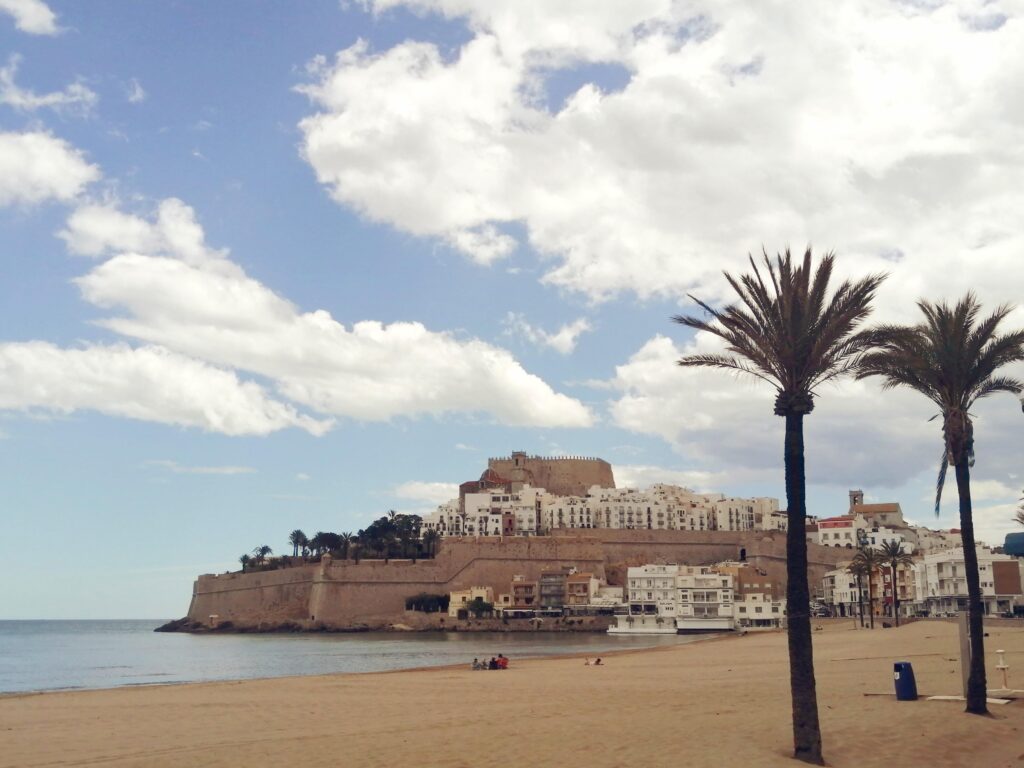
Peñíscola was truly a surprise. A magnificent coastal city with a beautiful historic center, very well cared for and clean.
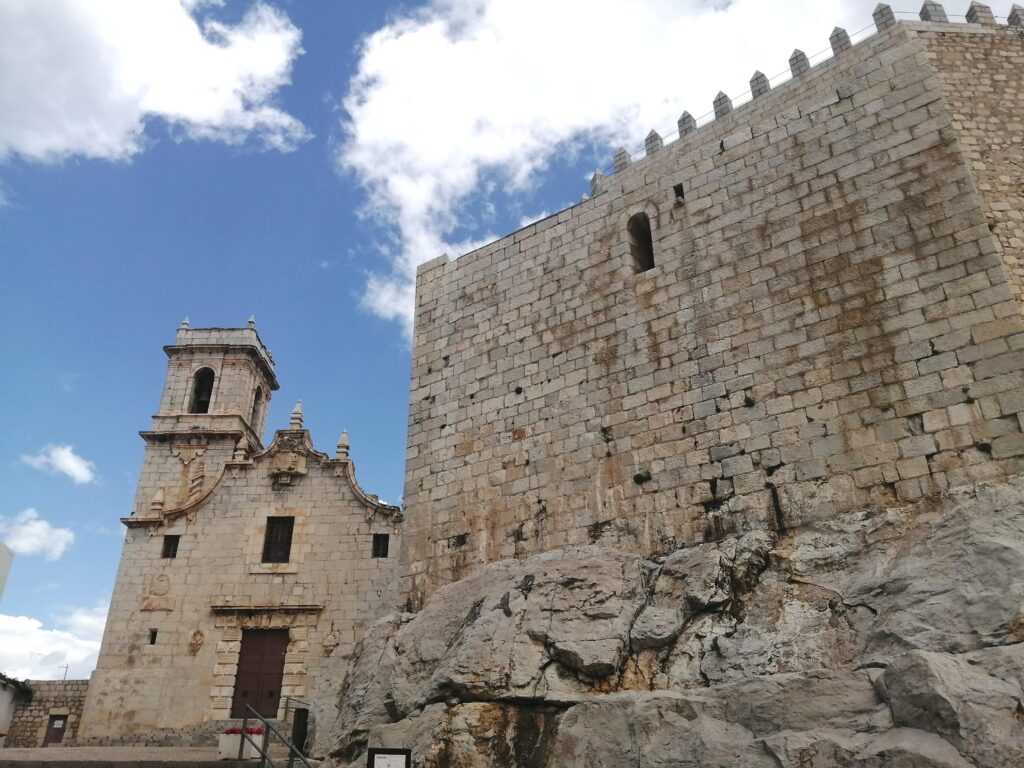
The journey through the Iberian Peninsula is winding down, and there’s only one more destination left: Barcelona.
The journey in the Iberian Peninsula: Barcelona
We depart for Barcelona on the morning of May 6th, aware of the traffic we will encounter at its entry point. The only available camper parking spot to view the Catalan capital is in Cabrera de Mar, as the camping site El Masnou is closed. The Cabra de Mar rest area is located about thirty minutes by train from Barcelona (41.512842, 2.400363).
Arriving in Cabrera de Mar, we take the train to Barcelona—fortunately leaving Nuri with his muzzle. Spain seems not to be very dog-friendly, as numerous no-entry signs for dogs are found everywhere.
Barcelona presents itself beautifully, cleanly, and is bustling with many people around. We immediately visit the Gothic Quarter.
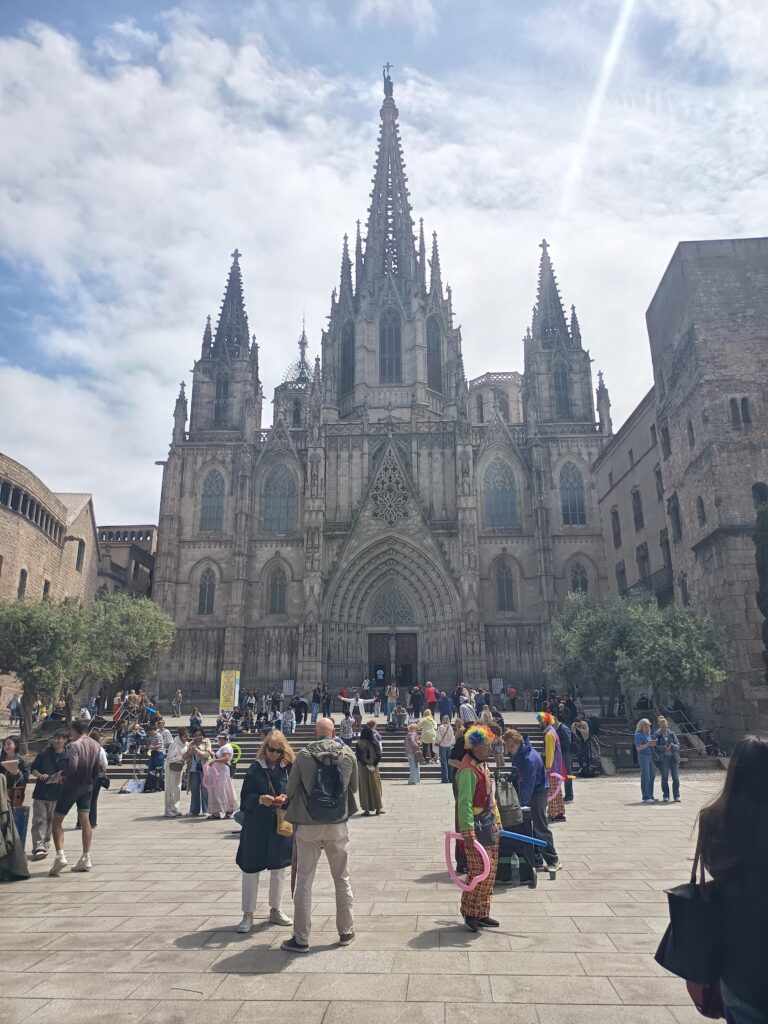
We’ll quickly enjoy aperitif with tapas at Plaça de San Miguel after paying our respects to the Generalitat de Catalunya.
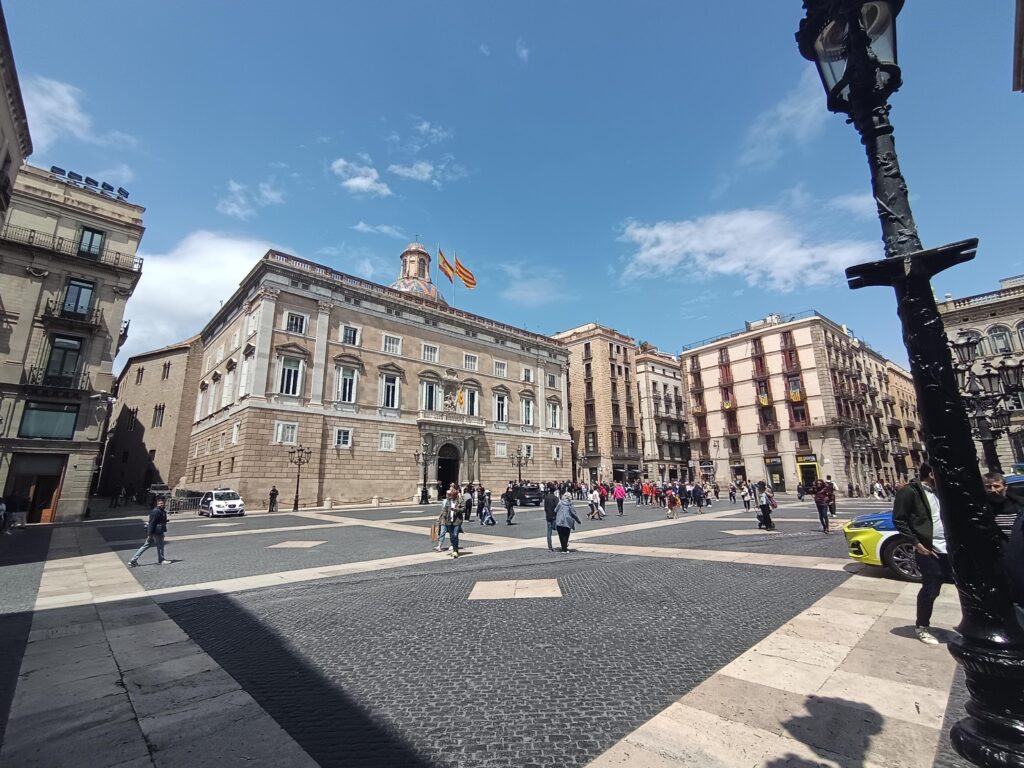
After a stroll at Barceloneta, we head towards the Sagrada Familia. Absolutely fantastic.
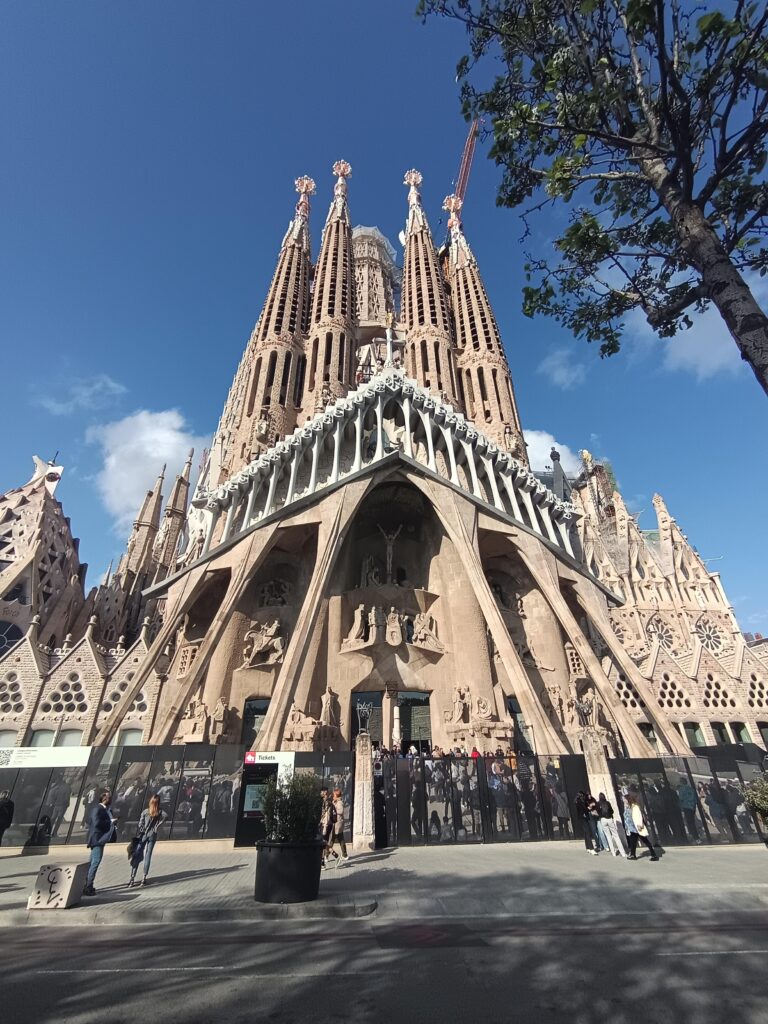
We return to Cabrera de Mar in the evening after the inevitable rain, to rest a bit and prepare for the final crossing back home.
Bonus: Sardinia
We board the ship from Barcelona on May 7th at 23:59 and arrive back in Sardinia at Porto Torres around 15:00 on May 8th.
We immediately head towards the La Pelosa beach. Taking advantage of the fact that it is not yet paid or closed, we stay in front of the Pelosetta beach (40.968646, 8.206136).
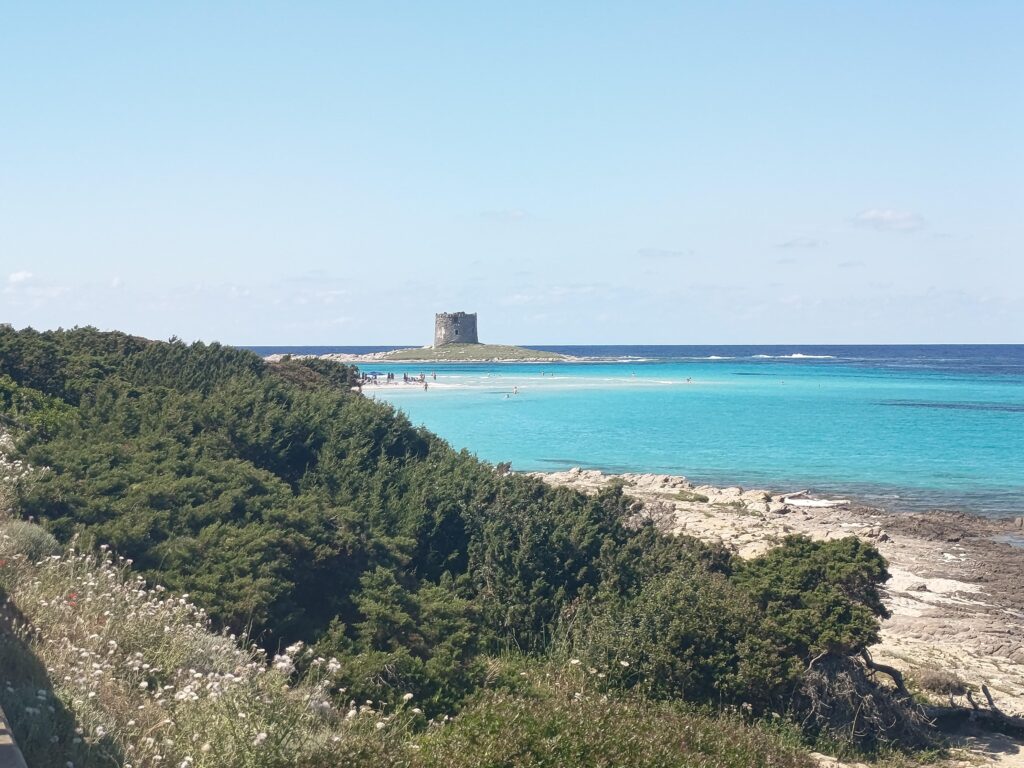
From May 9th to May 11th, we stay at Piscinas, right under the largest mobile dunes in Europe. A true desert of sand immersed in pristine nature. (39.540708, 8.451722)
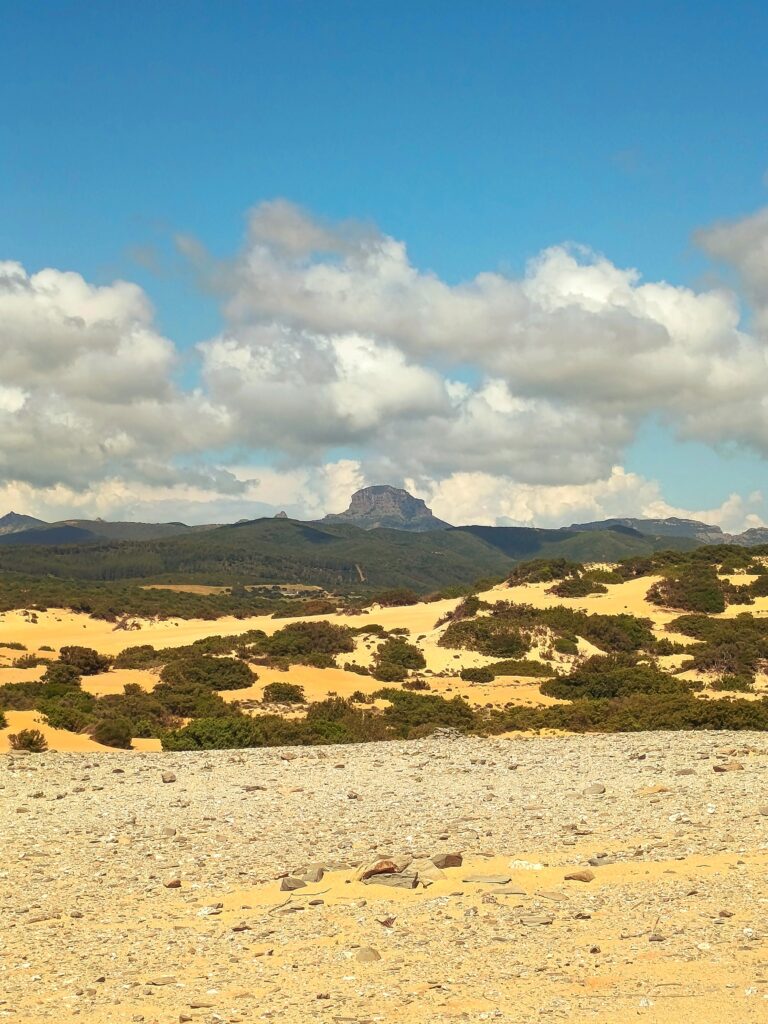
Conclusions
The journey through the Iberian Peninsula was engaging and highly satisfying. Camping is definitely recommended for its safety, economy, and providing stunning landscapes to visit. Glen covered a total of 3700 km, navigating various terrains including unpaved roads, paved highways in flatlands, hills, and high mountains without any signs of difficulty.
The average price per liter of fuel was €1.25, making this trip structurally economical. Spain did not turn out to be particularly economical compared to other cities in Southern Europe, while Portugal confirmed its low prices.
Unfortunately, I must confirm that Spain is not fully dog-friendly despite encountering very friendly and accommodating people with dogs. Nuri thanks you all!
The journey through the Iberian Peninsula was more focused on naturalistic destinations and smaller interior realities rather than visiting large cities. It would certainly be more comfortable to return from departure points using direct flights.
Looking forward to the next adventure!

Leave a Reply